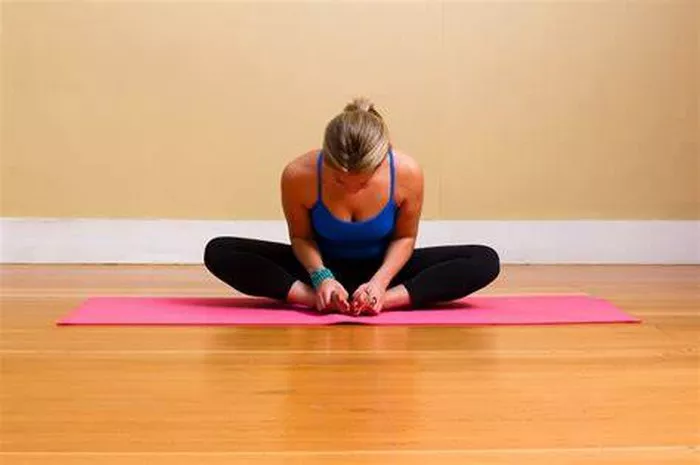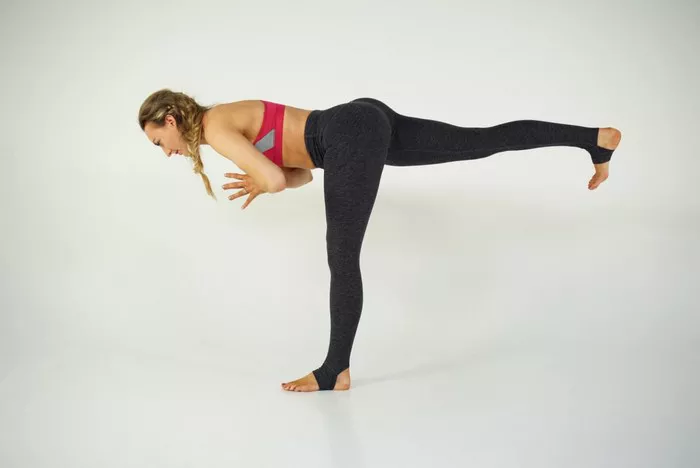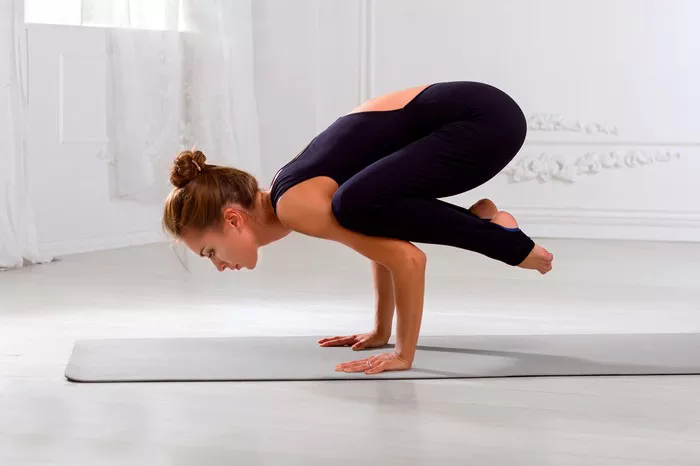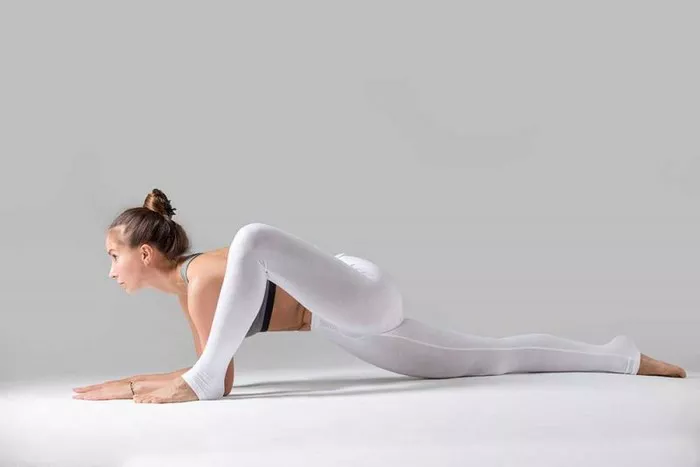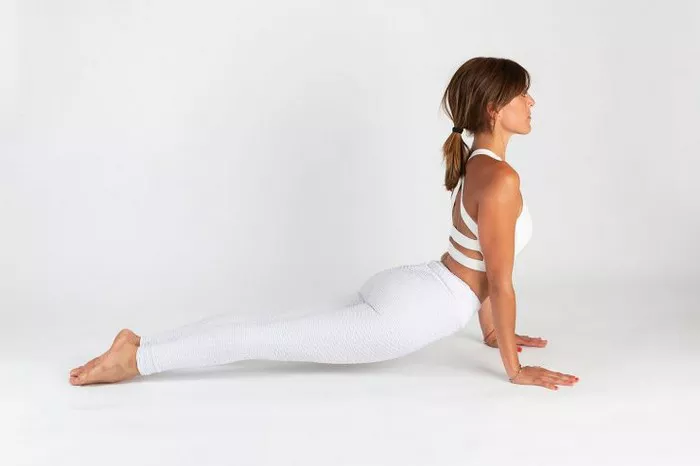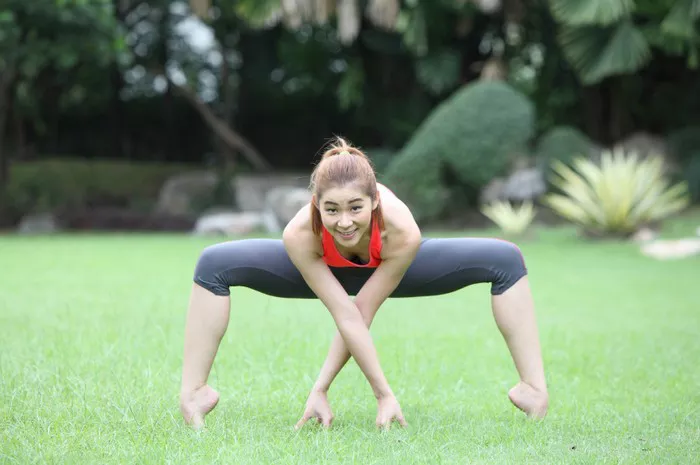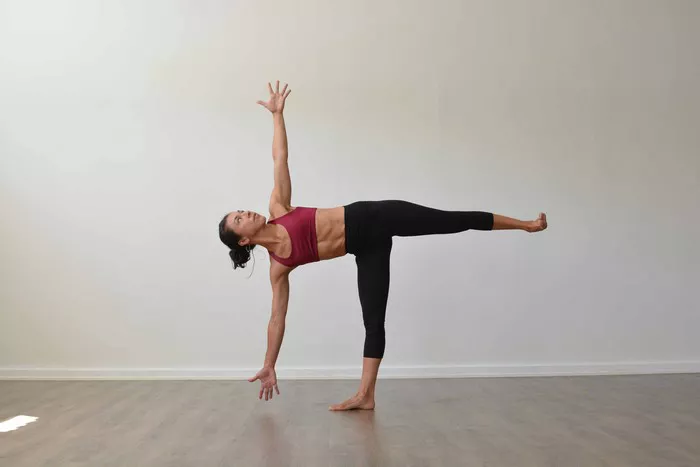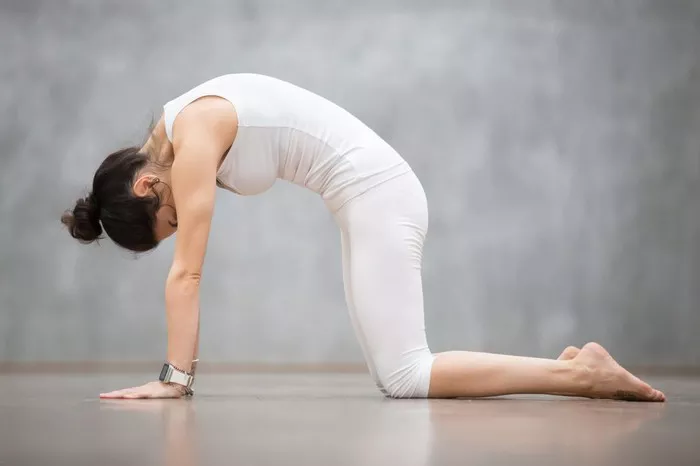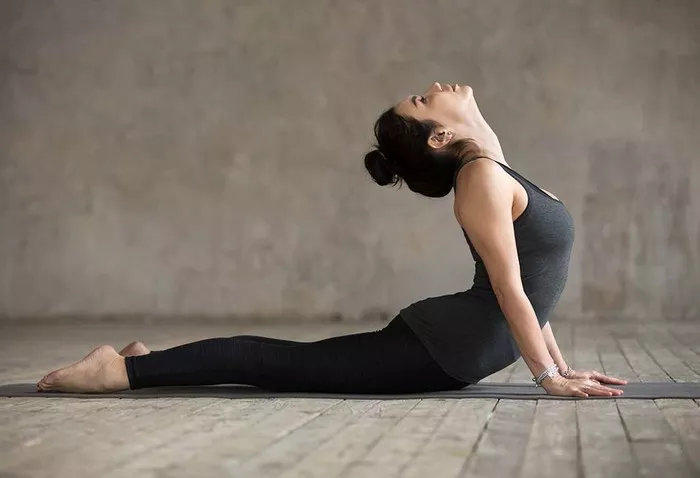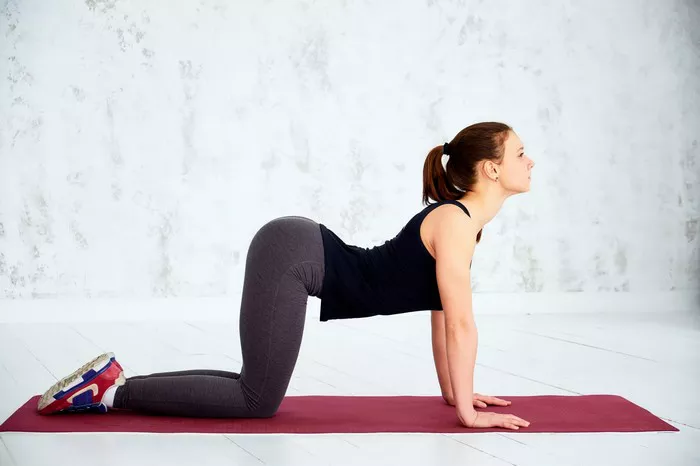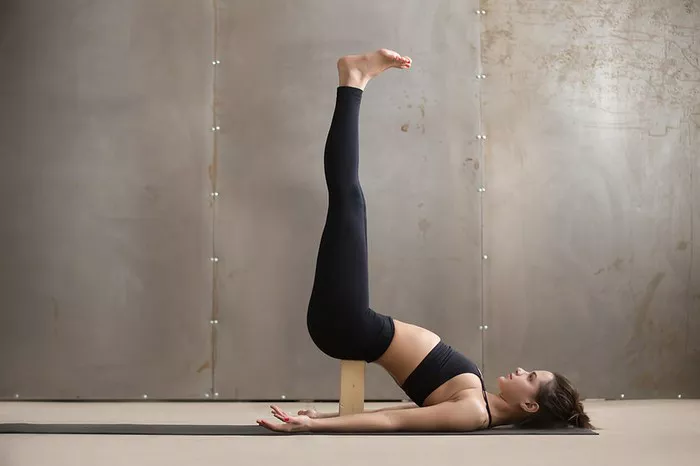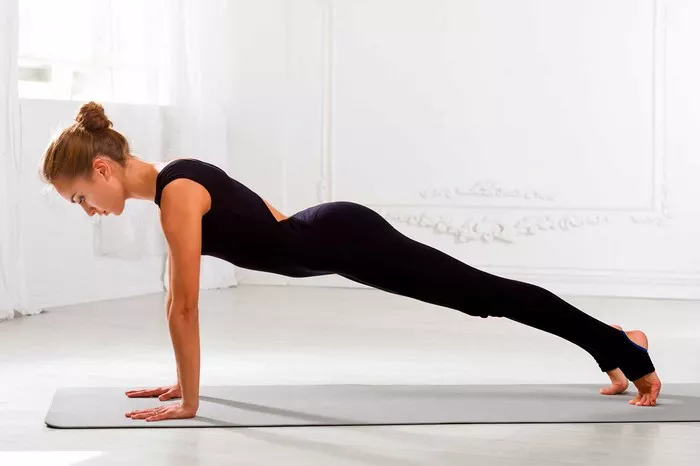The Bird of Paradise Pose, also known as Svarga Dvijasana in Sanskrit, is a dynamic and graceful standing pose that blends balance, flexibility, and strength. The pose is named after the Bird of Paradise, a vibrant, tropical bird known for its beauty and elegance, which is reflected in the posture’s fluid and expansive movement. This advanced yoga pose requires a combination of balance, strength, and flexibility, making it not only a visually stunning posture but also one that offers numerous physical and mental benefits.
In this article, we will explore the various benefits of the Bird of Paradise pose, including its effects on flexibility, strength, balance, posture, and mental focus. We will also delve into its therapeutic advantages, contraindications, and tips for safely incorporating this pose into your yoga practice.
Understanding the Bird of Paradise Pose
Before discussing the benefits, it’s helpful to understand the mechanics of the Bird of Paradise pose. To enter this pose, one must first begin in a standing position, typically from a forward fold, and then gradually work into a deep twist while maintaining balance on one leg.
Here’s a step-by-step breakdown of how to perform the Bird of Paradise pose:
Start in a Standing Forward Fold: Begin by standing tall with your feet hip-width apart. From here, bend forward, reaching for your toes or the floor. This helps to lengthen the hamstrings and prepare the body for the pose.
Grab the Foot: With your left hand, reach around and grab the outer edge of your right foot. If you are not able to reach the foot immediately, you can use a yoga strap around the foot to assist.
Engage the Core and Lift the Leg: As you exhale, begin to shift your weight onto your left foot, lifting your right leg upward while keeping your torso stable and your core engaged.
Twist and Open the Chest: At the same time, twist your torso to the right, opening your chest toward the sky. This requires flexibility in your spine, along with coordination of your shoulder and hip movements.
Balance and Extend: As your right leg reaches upward, keep your body aligned and stable, using your core strength to maintain balance. Extend your right leg fully, reaching the toes toward the sky, and open your arms wide, like the wings of a bird.
Hold the Pose: Once you are in the full expression of the pose, focus on steady breathing and maintaining balance. Hold for a few breaths, then slowly release and repeat on the other side.
The Bird of Paradise pose is an advanced posture that demands a high level of flexibility, balance, strength, and concentration. It engages several muscle groups and offers a wide range of benefits for the practitioner, both physically and mentally.
Physical Benefits of the Bird of Paradise Pose
1. Improves Balance
The Bird of Paradise pose is a powerful way to improve your sense of balance. By requiring you to balance on one leg while twisting the torso and extending the other leg, this pose challenges your proprioception and strengthens your ability to maintain stability. This balance component not only works the muscles of the standing leg but also engages your core muscles, particularly the abdominals and obliques, to prevent wobbling and to maintain proper alignment.
Over time, practicing this pose helps to develop better overall balance, which is beneficial for other yoga poses and for daily activities that require coordination and stability. A solid sense of balance also reduces the risk of falls, especially as you age.
2. Enhances Flexibility
The Bird of Paradise pose offers significant flexibility benefits, especially in the legs, hips, and spine. To perform the pose correctly, you need flexibility in the hamstrings and hips to lift your leg high while keeping your standing leg stable. The twisting motion also encourages spinal flexibility, which is important for maintaining a healthy range of motion and preventing stiffness in the back.
Additionally, the opening of the chest and the shoulder rotation provide a deep stretch for the chest, shoulders, and arms. This can help to release tightness and improve posture, particularly for individuals who spend long hours sitting at a desk or working on a computer.
3. Strengthens the Core
A strong core is essential for the Bird of Paradise pose, as it helps maintain balance and stability while twisting and lifting the leg. Engaging the core also protects the lower back from injury during the pose. By regularly practicing this pose, you develop stronger abdominal muscles, including the rectus abdominis, obliques, and transverse abdominis, which play a crucial role in overall stability and posture.
In addition to the core, the Bird of Paradise pose strengthens the muscles in the standing leg, particularly the quadriceps, hamstrings, and glutes. The standing leg must work to stabilize the body while lifting and holding the other leg in the air.
4. Increases Hip Mobility
The Bird of Paradise pose is an excellent way to enhance hip mobility. The deep flexion required in the lifted leg stretches the hip flexors, while the external rotation in the standing leg helps to open the hips. This can be particularly beneficial for individuals who have tight hips or spend a lot of time sitting. Increased hip mobility can help improve overall movement patterns and prevent discomfort in the hips, lower back, and knees.
5. Opens the Chest and Shoulders
The twisting motion of the Bird of Paradise pose also has significant benefits for the chest and shoulders. As you rotate your torso and extend your arms, you open up the chest and stretch the shoulder muscles. This action helps counteract the forward hunch that many people develop from sitting for long periods of time, improving posture and alleviating tightness in the upper body.
Regular practice of the Bird of Paradise pose can help release tension in the shoulders and chest, promoting better breathing and reducing stress. This can be particularly useful for individuals who experience tension in these areas due to poor posture or prolonged sitting.
Mental and Emotional Benefits
In addition to its physical benefits, the Bird of Paradise pose offers numerous mental and emotional advantages. The combination of strength, balance, and flexibility required to perform the pose encourages a deep sense of focus and mindfulness. Here are some of the mental benefits:
1. Cultivates Mental Focus and Concentration
Holding the Bird of Paradise pose requires a high level of concentration. Balancing on one leg while twisting the body and lifting the other leg demands mental clarity and attention to detail. Practicing this pose regularly helps to sharpen mental focus, which can be applied to other aspects of life, such as work, school, and personal relationships.
2. Builds Confidence
Successfully executing the Bird of Paradise pose can provide a huge sense of accomplishment. This sense of achievement boosts self-confidence and encourages a positive mindset. As you progress in your practice and overcome the physical and mental challenges of the pose, you develop greater trust in your body and abilities.
3. Reduces Stress and Anxiety
Like most yoga poses, the Bird of Paradise can help to reduce stress and anxiety. The act of focusing on the breath while maintaining balance promotes a state of calm and relaxation. The physical challenge of the pose also helps to release built-up tension in the body, allowing you to feel more grounded and centered. This can be especially helpful for individuals dealing with stress or anxiety.
Therapeutic Benefits
The Bird of Paradise pose can also offer therapeutic benefits, particularly for individuals with specific physical conditions or those looking to prevent certain injuries. Some of the therapeutic advantages include:
1. Alleviates Lower Back Pain
The twisting motion and hip-opening qualities of the Bird of Paradise pose can help alleviate lower back pain by releasing tension in the spine and the surrounding muscles. This can be particularly beneficial for people who experience chronic back discomfort due to tight hip flexors or poor posture. However, it’s important to practice the pose with proper alignment to avoid putting unnecessary strain on the lower back.
2. Improves Posture
Since the Bird of Paradise pose opens the chest and strengthens the core, it is highly effective for improving posture. It counteracts the effects of slumping or hunching forward and promotes a more upright and aligned posture. Better posture not only improves appearance but also helps to prevent musculoskeletal discomfort and reduces the risk of long-term health issues associated with poor alignment.
3. Boosts Circulation
The Bird of Paradise pose helps stimulate blood flow throughout the body. The standing leg strengthens the lower body muscles, which in turn improves circulation to the legs, while the chest-opening twist encourages better circulation in the upper body. Improved circulation supports overall health by providing nutrients and oxygen to the cells, while also aiding in the removal of waste products from the body.
Contraindications and Cautions
While the Bird of Paradise pose offers a wide range of benefits, it is not suitable for everyone. Individuals with the following conditions should use caution or avoid this pose entirely:
Knee injuries: The Bird of Paradise pose requires significant weight-bearing on the standing leg. If you have a knee injury, this pose may exacerbate the condition.
Hip issues: The deep hip flexion and rotation can be challenging for people with hip pain or injury. If you have hip issues, consider modifying the pose or working with a yoga instructor to ensure proper alignment.
Lower back problems: The twisting motion of the torso can strain the lower back, especially if proper alignment is not maintained. If you have a history of lower back pain, it’s essential to practice the pose mindfully and avoid overextending.
Tips for Practicing the Bird of Paradise Pose
Warm Up: Before attempting the Bird of Paradise pose, warm up with poses that focus on hip flexibility, hamstring stretches, and spinal twists.
Use Props: A yoga strap can be used to help grasp the foot and support your practice as you work toward full expression of the pose.
Focus on Alignment: Keep the standing leg firm and engaged to provide stability. Ensure that your shoulders remain aligned with your hips to prevent strain in the spine.
Practice Patience: The Bird of Paradise is an advanced pose that requires practice and dedication. Don’t rush the process. Take your time to build flexibility, strength, and balance progressively.
Conclusion
The Bird of Paradise pose offers a multitude of benefits for both the body and the mind. It improves flexibility, strength, and balance, while also enhancing mental focus and reducing stress. As an advanced yoga posture, it requires practice and patience to master, but with consistent effort, it can lead to significant improvements in overall health and well-being.
Whether you are looking to deepen your yoga practice or explore new ways to challenge your body, the Bird of Paradise pose is an excellent addition to your repertoire. With the right guidance and preparation, you can reap the many rewards this graceful pose has to offer.
Related Topics:

